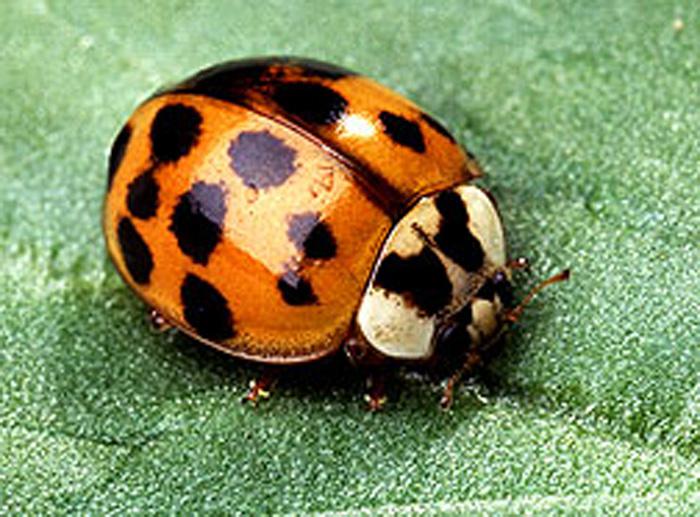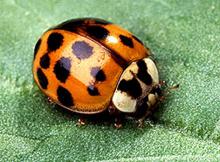Information Possibly Outdated
The information presented on this page was originally released on September 23, 2004. It may not be outdated, but please search our site for more current information. If you plan to quote or reference this information in a publication, please check with the Extension specialist or author before proceeding.
Ladybugs ready to come indoors
MISSISSIPPI STATE -- One of the friendly bugs is about to become rather unfriendly.
As fall approaches, the ladybug, known scientifically as the Asian lady beetle, will be looking for a warm place to spend the winter. In their native land, this overwintering home is a rocky outcropping, but in Mississippi, they make do with light-colored buildings.
Blake Layton, entomologist with the Mississippi State University Extension Service, said buildings with unshaded western or southern exposures are the most attractive to the beetles.
"Once the lady beetles land on the side of the building, they search out cracks and crevices that allow them entry into wall voids and attics where they often congregate in large numbers," Layton said. "As temperatures warm in the spring, overwintering lady beetles begin to search for places to leave their overwintering quarters. Many beetles get lost and find their way inside the building rather than outside."
When large numbers of ladybugs invade a home, the beneficial insects become a serious nuisance. The best way to avoid the problem is by preventing them from ever entering a home.
"Take steps now to make sure the exterior of your house is 'bug-tight' before these insects begin searching for overwintering quarters," Layton said. "The key is to seal or screen any opening greater than one-sixteenth of an inch in diameter."
Many potential entry points are easy to spot and seal. Typical trouble spots include around windows and doors, exterior plumbing and conduit, and cracks in woodwork or brickwork. Such entry points can be sealed with weather stripping, door sweeps, caulking or foam sealant, depending on which is most appropriate to the particular situation.
Securely cover attic, roof and soffit vents with screen, and make sure large gable vents are properly covered.
Houses with overlapping, board-type siding nailed directly to the wall studs have a significant problem with entry points. Without a solid wallboard behind them, this siding provides hundreds of potential entry points for lady beetles.
"Each house has its own unique set of potential entry points, and each house must be considered on a case-by-case basis," Layton said. "Just be sure to complete all exterior screening and sealing before the beetles enter the building."
Sealing exteriors after the beetles arrive will only intensify the problem as beetles have no way out but through the interior of the building. However, interior sealing of walls and ceilings can be done at any time.
"Here the focus is to seal around electrical outlets, light fixtures and other holes in interior walls and ceilings to prevent beetles overwintering in the attics and wall voids from being able to make their way into rooms," Layton said.
Insecticides do little to manage a lady beetle invasion. Layton said residual sprays of synthetic pyrethroid insecticides can be applied to the exterior walls of invasion-prone buildings, especially those with more potential entry points than can be effectively sealed.
"Several insecticides are available for use by homeowners, but many may wish to have such treatments applied by a licensed pest control company," Layton said. "Where sealing is practical, it is far more effective than relying on insecticides."
Layton said lady beetles prey on tree-dwelling aphids.
"This year's outbreak of Asian wooly hackberry aphids, combined with large numbers of crape myrtle aphids, has resulted in a bumper crop of Asian lady beetles," Layton said. "Although we have dozens of different species of lady beetles here in Mississippi, the Asian lady beetle is the only species that becomes a pest by invading homes."
Mike Williams, Extension entomologist, said ladybugs also feed on garden pests and benefit gardeners nearly everywhere.
"I know of no states that don't have some lady beetles, and they're found in most areas of the world," Williams said.
There are many different species of lady beetles. Colors range from orange to black to brown, but most folks readily recognize and are most familiar with the red spotted, or convergent, lady beetle. The most common of the larvae are about twice as long as the adult, and look somewhat like a small blue, green or black alligator with six big legs and orange or black spots.



